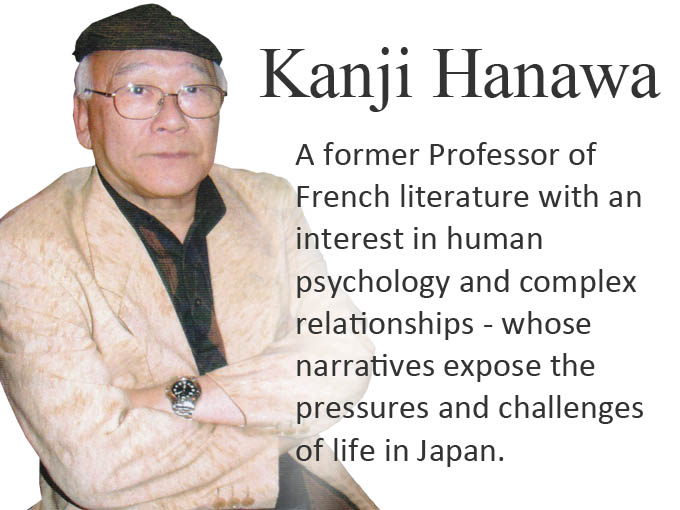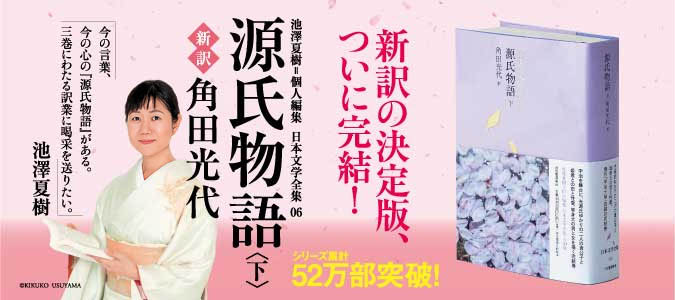 Japanese language promotional banner advert for the third volume of Mitsuyo Kakuta’s adaption of The Tale of Genji, published February 2020 by Kawade Shobo Shinsha.
Japanese language promotional banner advert for the third volume of Mitsuyo Kakuta’s adaption of The Tale of Genji, published February 2020 by Kawade Shobo Shinsha.When Kakuta, who is one of Japan’s most read female authors despite not yet having a high profile outside Japan, and her publisher Kawade Shobo Shinsha, one of Japan’s most prestigious, agreed on updating this classic, and ‘translating’ the original 11th century text, for a new generation, into vibrant contemporary Japanese, everyone expected it to take three years.
In fact, it took much longer but has been worth the wait, according to experts, critics, reviewers and most importantly the Japanese reading public who got their copies of the final book in the series last week.
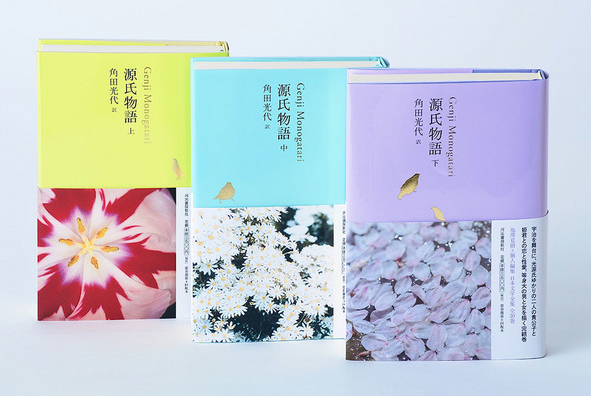 The three books in Mitsuyo Kakuta’s adaptation of The Tale of Genji published by Kawade Shobo Shinsha.
The three books in Mitsuyo Kakuta’s adaptation of The Tale of Genji published by Kawade Shobo Shinsha.She says, perhaps naively, that she expected (due to the large number of books on The Tale and existing modern ‘translations’ by some of Japan’s most famous authors) her task would be like sketching “a vast scene” when looking out at a beautiful well-documented expanse in front of one’s eyes and the “mountain stretching far beyond”.
She didn’t expect to have to decode and decipher ancient Japanese prose, nor the amount of reading that would be involved. Indeed, the idea of “sketching” out the narrative, as she had hoped, turned out to be a “ridiculous” and naïve concept.
The process, according to Kakuta, was “painstaking.” More like “trudging through a muddy rice field” and then climbing, ascending and then descending a series of distant mountains on her quest to reach her final goal: a series of publications that would inspire and light up this Japanese classic for a new generation.
The essence of The Tale of Genji, written by the Japanese noblewoman Murasaki Shikibu (978-1014), was in a sense hidden from view, with its myriad scenes and characters, veiled behind a curtain that just left “impressions” making it hard to judge “what was important and what was not.” The only way to “rip through this curtain” was to delve into the original prose itself.
Through this Herculean approach, Kakuta has been able to brilliantly adapt this masterpiece – uncloaking it and illuminating the narrative “beyond the curtain”.
The approach she has adopted and her limited prior knowledge of the tale itself, or indeed any ancient Japanese texts, has allowed her to apply a brand new perspective through a modern-day lens to this amazing epic story that was already a towering cultural pillar in Japanese literature and art.
Ever since its first publication in 1010, it has been required reading for Japanese aristocratic women and anyone aspiring to join Japan’s sophisticated refined classes.
Kakuta has followed in a long tradition of Japan’s leading author from each generation updating and publishing a new version of this “seductive novel” about the Japanese prince Hikaru Genji, literarily Shining Genji, who was uncommonly handsome, charming and intelligent. It is set in Japan’s Heian Period (794-1185), a very peaceful period in Japanese history.
This multi-generational trend has helped keep this rather long and esoteric tale, which in its original version consists of 54 scrolls or chapters; around a million words; about 430 different characters; 800 poems; as well as 8 or so love interests, fresh, and relevant to contemporary readers.
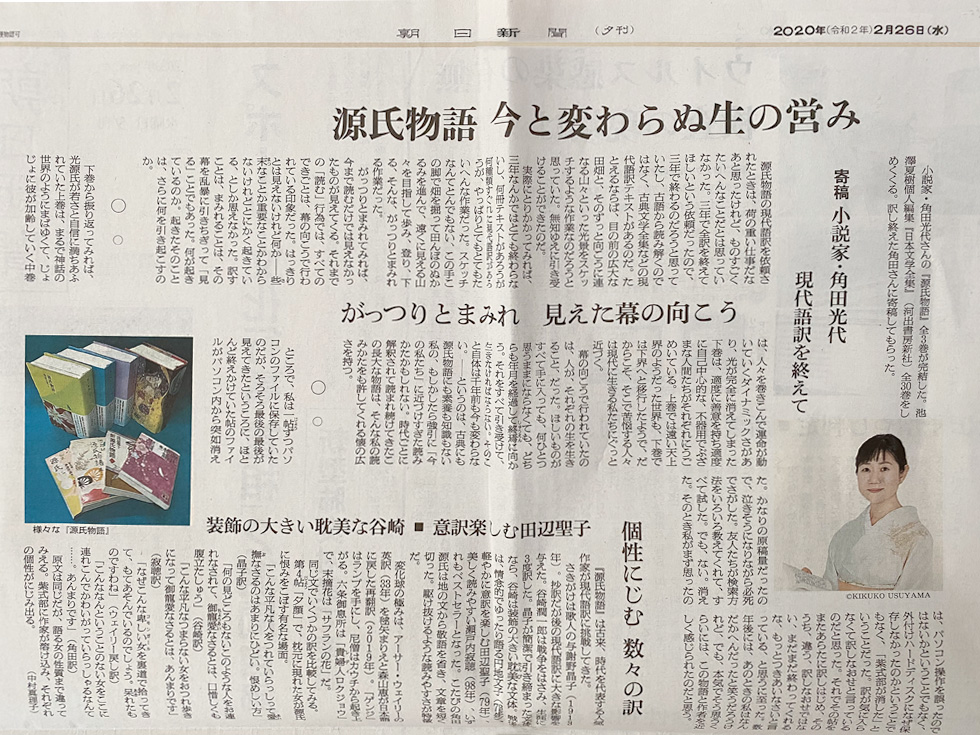 Article in the Asahi Shimbun, Evening Edition, published 26 February 2020 on the publication of Mitsuyo Kakuta’s final volume and completion of her adaption of The Tale of Genji.
Article in the Asahi Shimbun, Evening Edition, published 26 February 2020 on the publication of Mitsuyo Kakuta’s final volume and completion of her adaption of The Tale of Genji.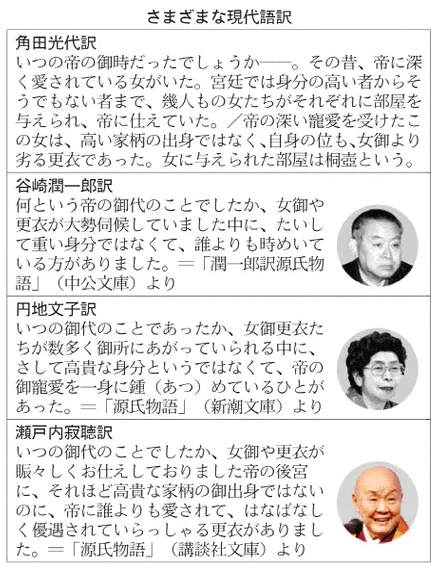 A graphic included in an article about Mitsuyo Kakuta’s adaptation of The Tale of Genji published in Nikkei Style, comparing her adaptation to that of other famous Japanese authors. Top box includes a sample of her text, followed beneath by the text for the same section of the Japanese classic from Tanizaki Junichiro (1886-1965), Fumiko Enchi (1905-1986) and Jakucho Setouchi. Image Style Nikkei.
A graphic included in an article about Mitsuyo Kakuta’s adaptation of The Tale of Genji published in Nikkei Style, comparing her adaptation to that of other famous Japanese authors. Top box includes a sample of her text, followed beneath by the text for the same section of the Japanese classic from Tanizaki Junichiro (1886-1965), Fumiko Enchi (1905-1986) and Jakucho Setouchi. Image Style Nikkei.That said, the first modern ‘translation edition’ of The Tale of Genji is said to have been published by the feminist poet and author Akiko Yosano (1878-1942) in 1912. And one of the first proper English translations was produced by Arthur Waley (1889-1966), a British translator of Chinese and Japanese literature who interestingly never visited Asia in the 1920s. Since then there have been many more.
According to the Japan expert and former Editor of The New York Review of Books, Ian Buruma, The Tale of Genji, which is replete with rather promiscuous characters, is a novel all “about the art of seduction.”
“Murasaki watched the sexual manoeuvrings, the social plots, the marital politics, the swirl of slights and flatteries that went on around her, with the keen, sometimes sardonic, and always worldly eyes of a medieval Jane Austen.
Her Buddhist view of life’s fleeting nature and the vanity of human affairs added a dash of melancholy to her ornate aristocratic prose,” Buruma writes in a review of a new English language translation by Dennis Washburn published in 2015 for The New Yorker.
It is apparent from the original version that the tools for seduction in Japan’s Heian Period were art, poetry, calligraphy and style. Unsurprisingly, it took Kakuta considerable time to decide on the right style and rhythm required to make the novel readable, accessible and compelling for today’s readers who are more familiar with online dating than ancient methods of courtship.
One of the other challenges Kakuta faced was her troublesome computer and a disappearing file, something that almost brought her to tears as publication deadlines approach.
Kakuta decided that the file must have been deleted by Murasaki Shikibu as she disapproved of the adaptation of the sections lost. And that was the attitude Kakuta says she adopted when she started writing them again from scratch, and is something she hopes she will be able to laugh about one day.
Nonetheless, her careful and considered approach appears to have worked wonders. Japanese readers are posting comments on social media about how amazingly easy it is to read her version and how her ‘translation’ reads like an original Kakuta novel set over a thousand years ago in Japan’s Heian Period.
Kakuta argues that the world of Genji behind its curtain is not so different to the one we live in today. If you have everything you want within your grasp, but nothing flows the way you wish or think it should, you are left with the question of how to live out one’s limited days. “That is the same today, as one thousand years ago”, Kakuta states.
The first volume of Kakuta’s edition was published in September 2017 and the second volume in October 2018 and the final volume on the 25th of February last month. Each of the three volumes is about 700-pages in length, and can now be purchased in a beautiful pink boxed set dressed with stunning calligraphy.
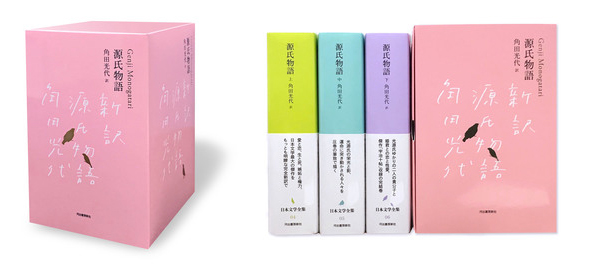 Image of Mitsuyo Kakuta’s three volume adaptation of The Tale of Genji, completed with the publication of the third volume in February 2020 with collectors pink box.
Image of Mitsuyo Kakuta’s three volume adaptation of The Tale of Genji, completed with the publication of the third volume in February 2020 with collectors pink box.The first title in the series was the Kojiki, The Record of Ancient Things, one of Japan’s oldest books, published in 2013, and the publication of the final volume of Kakuta’s The Tale of Genji completes this beautiful series of 30 books designed to be collected and displayed with pride. An interview with Ikezawa in Japanese about the series, and how he chose the books to be included, can be read here.
The Tale of Genji, with its shroud removed and illuminated by Kakuta’s modern magical prose, is expected to captivate a new generation of readers and inspire new creative works.
It is also expected to expand Genji’s readership from aristocratic Japanese women, Japan’s literati and those who aspire to be part of Japan’s sophisticated elite, to a new Genji that has been delicately polished and refined to shine for all of Japan. That is surely something Murasaki Shikibu would approve of.
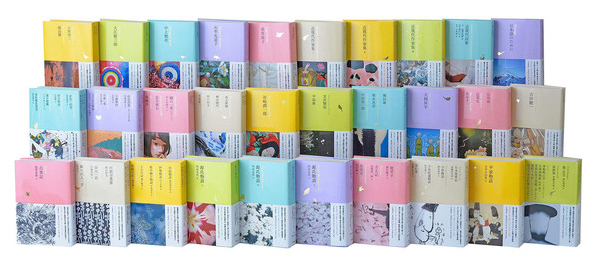 Image of Nihon Bungaku Zenshu, Complete Collection of Japanese Literature, a 30 book collection edited by Natsuki Ikezawa, which includes Mitsuyo Kakuta’s adaptation and modernisation of The Tale of Genji, published by Kawade Shobo Shinsha.
Image of Nihon Bungaku Zenshu, Complete Collection of Japanese Literature, a 30 book collection edited by Natsuki Ikezawa, which includes Mitsuyo Kakuta’s adaptation and modernisation of The Tale of Genji, published by Kawade Shobo Shinsha. About Red Circle:Red Circle Authors Limited is a specialist publishing and communications company that conducts bespoke projects on behalf of a carefully selected and curated group of leading Japanese authors. Red Circle showcases Japan’s best creative writing. For more information on Red Circle, Japanese literature, and Red Circle authors please visit: www.redcircleauthors.com.
About Red Circle:Red Circle Authors Limited is a specialist publishing and communications company that conducts bespoke projects on behalf of a carefully selected and curated group of leading Japanese authors. Red Circle showcases Japan’s best creative writing. For more information on Red Circle, Japanese literature, and Red Circle authors please visit: www.redcircleauthors.com.



